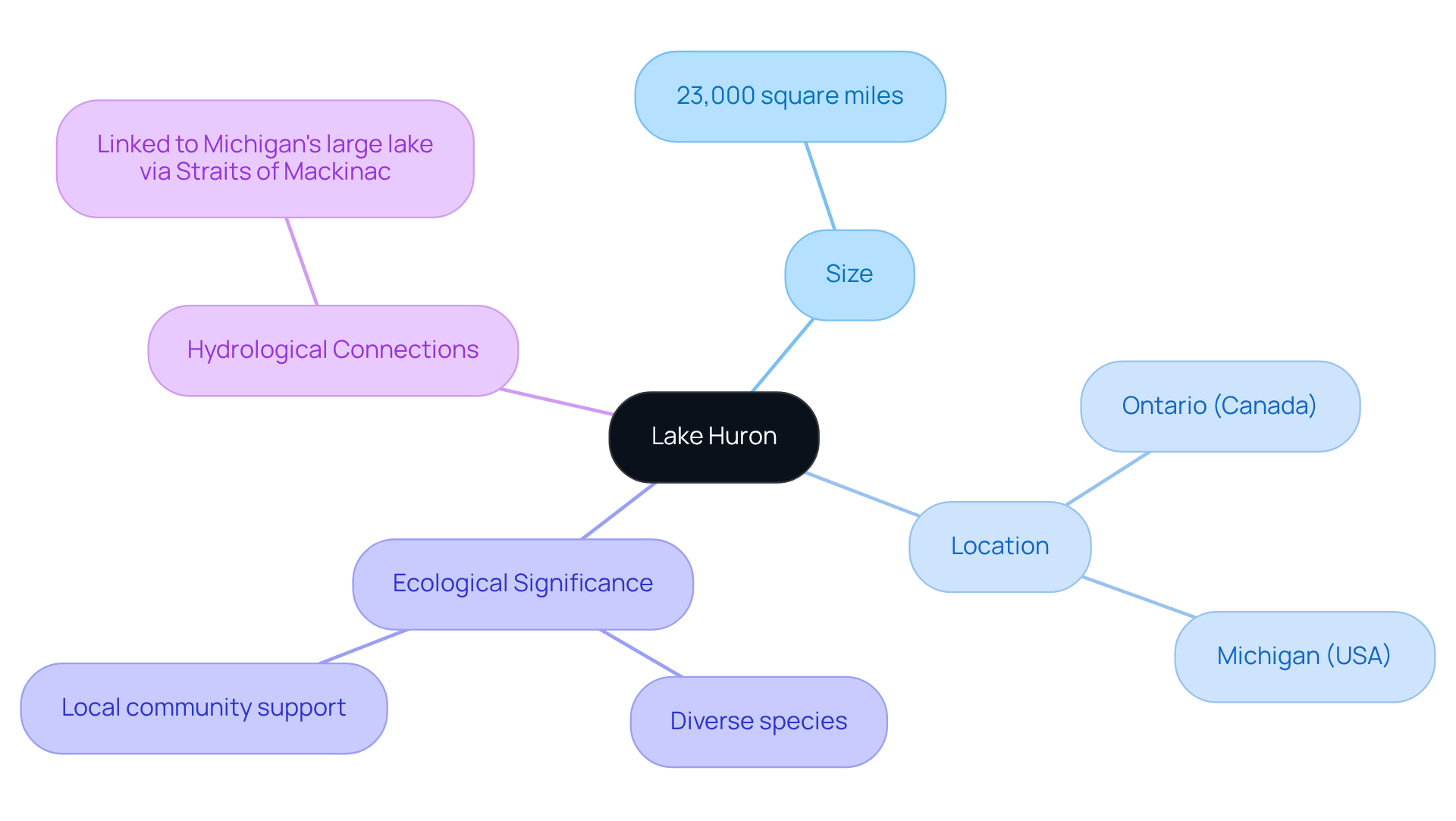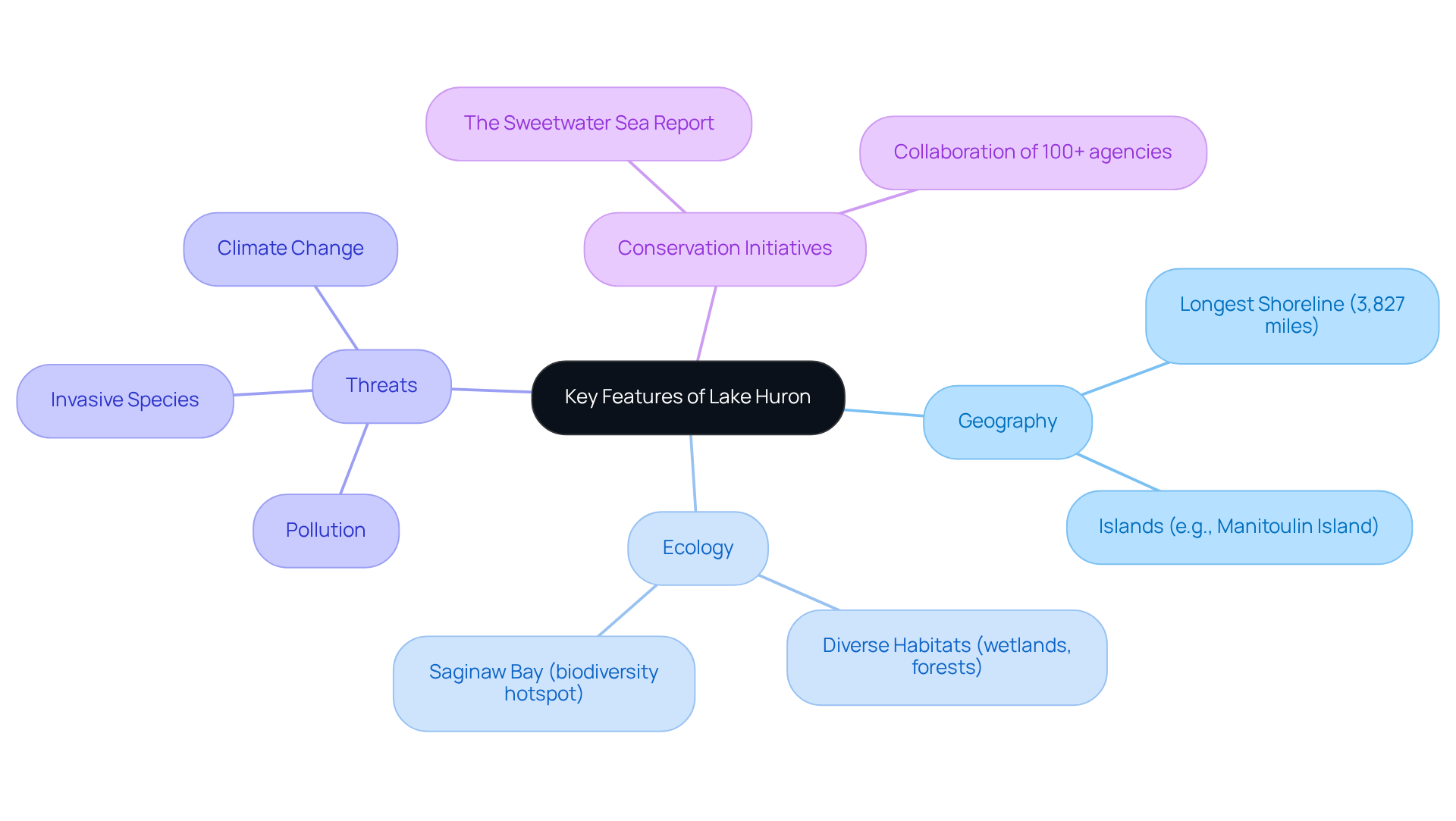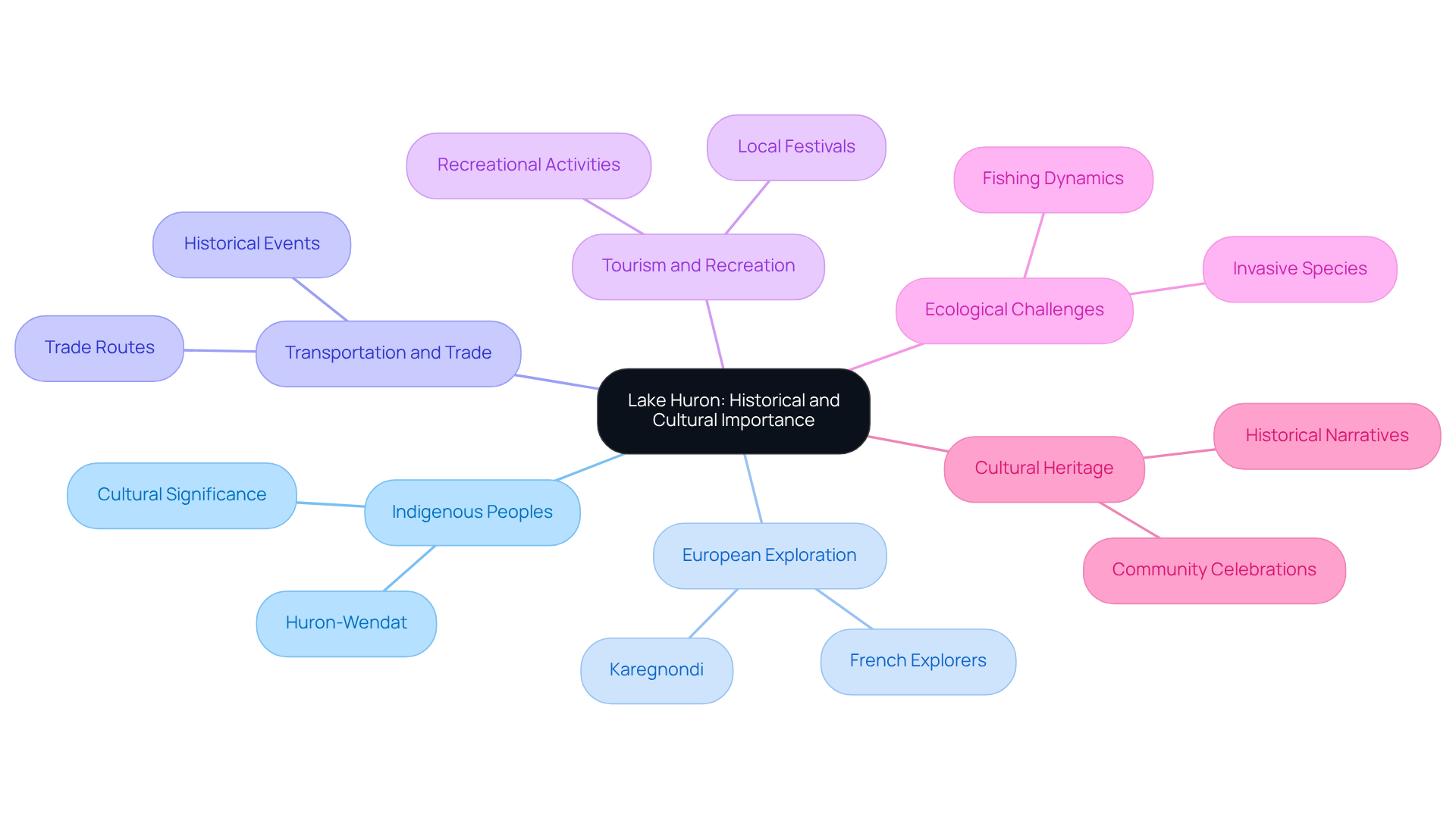Overview
The article presents a thorough overview of Lake Huron, underscoring its geographical significance, ecological diversity, and cultural history. Lake Huron stands out as the second largest of the Great Lakes by surface area, serving as a vital ecological resource. However, it faces significant threats from invasive species and pollution. Additionally, it plays an essential role in the cultural heritage and economy of local communities, emphasizing the need for awareness and action regarding its preservation.
Introduction
Lake Huron, the second largest of North America's Great Lakes, stands as a vast expanse of water and a critical ecological and cultural treasure. Its extensive shoreline, diverse habitats, and rich history underscore its pivotal role in the lives of millions who depend on its resources. Yet, as invasive species and environmental challenges increasingly threaten its delicate ecosystems, one must consider: how can we preserve the significance of Lake Huron for future generations while honoring its storied past?
Define Lake Huron: Geography and Significance
Lake Huron, one of the five Great Lakes of North America, stands out as the second largest by surface area, covering approximately 23,000 square miles (59,565 square kilometers). Bordered by the Canadian province of Ontario to the north and east, and the U.S. state of Michigan to the south and west, this expansive body of water is not just a geographical feature; it is a vital ecological resource.
Hydrologically linked to Michigan's large lake through the Straits of Mackinac, Lake Huron effectively functions as a unified expanse of water, showcasing its significance. Its vast size is matched by its ecological diversity, providing essential resources to millions of people in both Canada and the United States.
The importance of Lake Huron extends beyond its dimensions; it is a testament to nature's craftsmanship, offering a unique habitat that nurtures a wide range of species and supports local communities.

Explore Key Features of Lake Huron: Ecology and Geography
This body of water boasts the longest shoreline among all the Great Lakes, extending approximately 3,827 miles (6,157 kilometers). This expansive shoreline is punctuated by numerous islands, including Manitoulin Island, recognized as the largest freshwater island in the world. The lake's ecological diversity is exceptional, encompassing a variety of habitats such as wetlands, forests, and coastal regions that support a wide array of plant and animal species. Notably, the Saginaw Bay area is characterized by its shallow, warm, and nutrient-rich waters, serving as a biodiversity hotspot and a vital nursery for fish, as well as a habitat for migratory birds.
However, the ecosystems of this great lake face significant threats from invasive species, pollution, and climate change. Invasive species, particularly zebra mussels and alewives, have disrupted local ecosystems, leading to declines in native fish populations and altering food webs. For instance, the collapse of alewife and chinook salmon populations has profoundly impacted recreational and commercial fishing, with charter fishing activities declining by half in recent years, significantly affecting local fishing communities.
The biodiversity conservation initiatives in the region, as highlighted in the 2010 report 'The Sweetwater Sea,' emphasize the urgent need for coordinated strategies to protect and restore these vital ecosystems. This report was developed through collaboration among over 100 agencies and organizations, outlining specific conservation strategies and identifying key biodiversity features and threats. It underscores the importance of preserving the ecological integrity of this body of water for future generations, especially in light of primary threats such as habitat loss due to urban development and pollution.

Understand the Historical and Cultural Importance of Lake Huron
The body of water boasts a rich history that stretches back thousands of years, with indigenous peoples, including the Huron-Wendat, having inhabited its shores long before European exploration. Early French explorers in the 17th century named it 'Karegnondi,' signifying 'Freshwater Sea,' in honor of these indigenous peoples.
Historically, this body of water has served as a crucial transportation route for trade and exploration, profoundly influencing the development of the Great Lakes region. Its depths have witnessed numerous historical events, including conflicts and trade agreements, which have shaped the cultural landscape of the area.
Today, Lake Huron remains a focal point for tourism, recreation, and cultural heritage, with many communities celebrating their connection to the water through festivals and events. Local festivals frequently showcase the traditions and narratives of indigenous communities, fostering a deeper appreciation for the area's ecological and cultural significance.
Furthermore, the body of water's dimensions—206 miles in length and 183 miles in breadth—along with its volume of 849 cubic miles, underscore its value as a natural resource. The ongoing challenges posed by invasive species and the dynamics of fishing in areas like Saginaw Bay further illustrate the interconnectedness of the lake's ecology and the cultural practices of local communities, ensuring that the stories of its indigenous inhabitants are preserved and shared with future generations.

Conclusion
Lake Huron stands out not only as a significant geographical entity but also as a vital ecological and cultural resource. Its expansive size and diverse ecosystems play a crucial role in supporting local communities and wildlife alike. The lake's interconnectedness with surrounding regions underscores its importance within the broader context of the Great Lakes, emphasizing an urgent need for awareness and preservation.
Key aspects include:
- The lake's impressive shoreline
- Its ecological diversity
- The historical significance shaped by indigenous cultures and European exploration
The threats posed by invasive species, pollution, and climate change highlight the urgency of conservation efforts, as seen in initiatives aimed at protecting the lake's rich biodiversity. Furthermore, the cultural heritage tied to Lake Huron serves as a poignant reminder of the enduring connection between people and this natural resource.
Recognizing the importance of Lake Huron is essential for fostering a sustainable future. Engaging with its ecological and cultural narratives not only enriches our understanding but also encourages collective action to protect this invaluable resource. As communities and individuals, the responsibility lies in advocating for the preservation of Lake Huron's unique ecosystems and cultural legacies, ensuring that future generations can continue to appreciate and benefit from this remarkable body of water.
Frequently Asked Questions
What is Lake Huron?
Lake Huron is one of the five Great Lakes of North America and is the second largest by surface area, covering approximately 23,000 square miles (59,565 square kilometers).
Where is Lake Huron located?
Lake Huron is bordered by the Canadian province of Ontario to the north and east, and the U.S. state of Michigan to the south and west.
How is Lake Huron hydrologically connected to other bodies of water?
Lake Huron is hydrologically linked to Michigan's large lake through the Straits of Mackinac, functioning as a unified expanse of water.
Why is Lake Huron considered an important ecological resource?
Lake Huron provides essential resources to millions of people in both Canada and the United States and supports a wide range of species, showcasing its ecological diversity.
What significance does Lake Huron hold for local communities?
Lake Huron offers a unique habitat that nurtures various species and supports the livelihoods of local communities.



